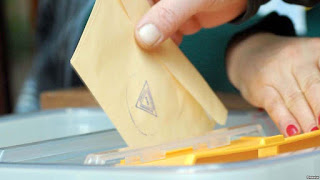Low Turnout on Armenian Parliamentary Elections?
Low Turnout on Armenian Parliamentary Elections?

by Anna Ryzhova
CRRC-Armenia International Fellow
In political science, there are two classical reasons, that underpin a concern about electoral turnout. The first concern is connected with legitimacy and governability – low turnout can erode the legitimacy of a regime. The second concern is related to representation – low levels of electoral participation can result in an unrepresentative outcome. In Armenia, according to the last opinion poll before the Parliamentary Snap Elections which took place on the 9th of December 2018, 75,7% of respondents confirmed that they were going to vote on the upcoming elections. These numbers were also backed by general enthusiasm about the new government and elections – 82% of respondents of the pre-election poll conducted by IRI expressed a positive attitude towards the recent change of government in Armenia. And still, according to the chairman of Armenia’s Central Electoral Commission, the final voter turnout on the 9th of December reached 48,63%, which is considered as the lowest turnout in any countrywide elections of Armenia since 1991 Independence Referendum. In regard to that, this article aims to answer the following questions: what are the reasons that underpin the voters’ turnout on recent snap parliamentary elections in Armenia and can it be considered low due to these reasons?
If we refer to the reasons for the final turnout, given by the officials, the Chairman of Armenia’s Central Electoral Commission saw bad weather as a reason for morning passive participation, while the acting Prime Minister Nikol Pashinyan pointed at the lack of intrigue of these elections, as well as the absence of the so-called dead or absent voters.
While these reasons most likely had their influence on the final turnout, according to Hrant Mikaelian, an independent researcher, the real voters’ turnout was in fact considerably higher and it can be estimated up to 65,2%. According to his calculations, the official number of inhabitants in Armenia (2969000) is approximately 200000 higher than the real number of inhabitants (according to him, the real number comprises 2793000 persons, approximately 28000 of whose are not Armenian citizens) due to high rates of emigration from Armenia. Since the number of voters in Armenia makes approximately 74,5% of the population, according to his estimations the number of voters was close to 2018000. Moreover, according to him, diminished voter’s turnout can serve as a proof that the so-called “administrative resource” was almost not mobilized, as well electoral bribing of voters most likely did not take place, confirming that the elections were fair. As for the discrepancy between the results of the pre-election poll and the real number of voters, Mr Mikaelian claims that this is a usual situation when people overestimate their electoral activity, which results in surveys giving much more optimistic prognoses than the actual outcomes.
It is still highly contested even among political scientists, whether a low turnout is a serious threat to democracy or whether a low turnout does manifest it and not actually have a significant effect on it. I would argue that it heavily depends on the context. In Armenian context, when international observers e.g. OSCE Office for Democratic Institutions and Human Rights, the CIS Observation mission, as well as independent observers e.g. European Platform For Democratic Elections (EPDE) state that the elections were transparent and open, it doesn’t seem relevant to question whether the elections were democratic based only on the voters’ turnout that is considered low. Moreover, the question of whether turnout was really low remains open in light of the calculations on the real number of voters present in Armenia.